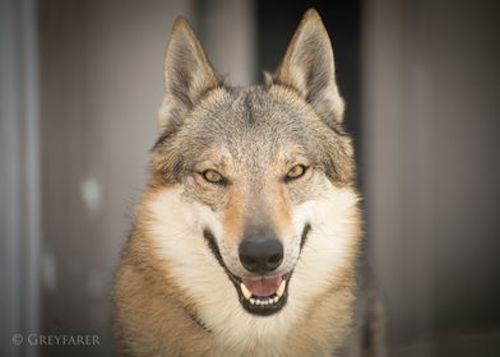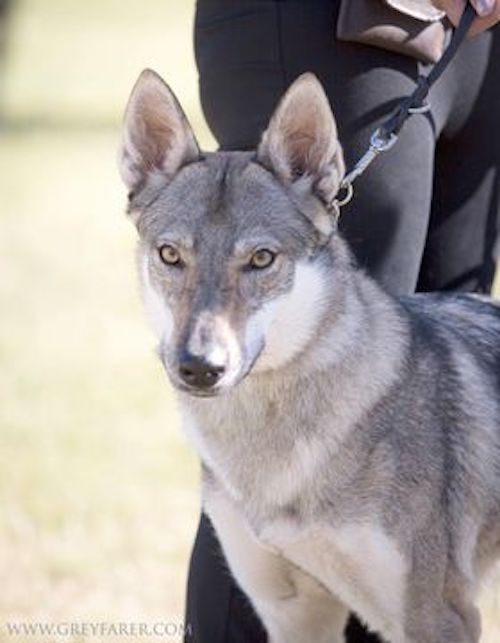
Argo, Brita, Lejdy, and Sarik. These are said to be the most popular names given to dogs in a particular breed that, as of this writing, is currently in the AKC’s Foundation Stock Service.
The popularity of these particular names in the breed is, no doubt, an “homage” to the females, Lejdy and Brita, and the males, Argo and Sarik, who were the four Carpathian Wolves bred with between 40 and 50 German Shepherd Dogs from several prominent working lines in an “experiment” in the mid 1950s.

Photo of Greyfarer Aludra by Jing HG
The idea to breed wolves with German Shepherd Dogs was the brainchild of Col. Karel Hartl, a Czech cynologist and breeder, and Maj. Frantisek “Dedo” Rosik, a cytologist from the Bratislava PS Brigade. Their goal: To create a breed that would have greater resistance to weather, better endurance, and a longer lifespan than the breed being used by the Border Guard at the time to patrol Czechoslovakian borders – the German Shepherd Dog.
The breeding program commenced in 1957 and was carried out at the kennels of the Border Guard in Libejovice.
The result was a new breed that was quick learning, rarely barked, had better navigational skills, faster reactions, better night vision and hearing, and a keener sense of smell than the German Shepherd Dog. The breed also had ability to run an absurd number of miles in eight hours and suffer no exhaustion.
It was called the Czechoslovakian Vlcak.
Early in the breeding program, it was felt that the percentage of “wolf-blood” was too high. Percentages adjusted, the third generation of hybrids were able to overtake German Shepherd Dogs on a running track, their superb orientation and endurance obvious. By the fourth generation, the breed had become more trainable and manageable. The experiment concluded in 1965 when it was felt that dogs qualified for further breeding. In 1966, sixteen dogs were put into service and another eighteen given to the civilian breeders to continue with breeding. According to the Czechoslovakian Vlcak Club of America, in the 1970s, most of the hybrids were sent to new kennels near Malacky, which belonged to the Bratislava section of the Border Guard.
In 1982, the breed was recognized as the National Breed of Czechoslovakia. The CV was recognized by the FCI in Europe in 1998, and in 2001, the Vlcak was recorded in the American Kennel Club’s Foundation Stock Service. In 2009, the first CV litter was born in the United States to Marcy Goldstone of Galomy Oak Kennel.
This past August (2023) the Vlcak was approved by the AKC Board of Directors to move forward into Miscellaneous class effective June 26, 2024. Upon full recognition, it will be assigned to the Working Group. The United Kennel Club accepted the breed in 2006 and has it in their Herding Dog Group.
Those interested in the CV should read this marvelous article on the breed’s history by Sharon DeGennaro in the October, 2022 issue of Showsight Magazine.
Photos: Thumbnail image is of Boomdabash Revolution by Jing HG; Insert photos
